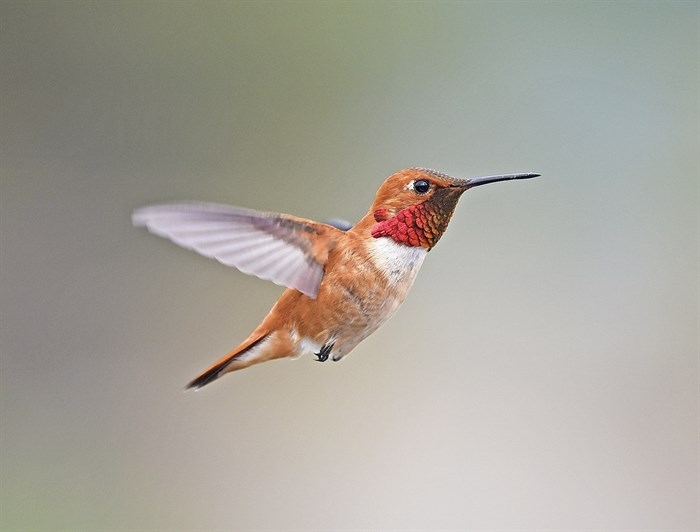
Rufous hummingbird
Image Credit: Wikipedia Commons
May 22, 2021 - 8:31 AM
A Kelowna wildlife researcher who grew up reading National Geographic is happy his research has been mentioned in the magazine.
UBC Okanagan biology professor Adam Ford was mentioned in National Geographic for his modelling work to determine “canary in the coal mine” species across B.C. which indicate the status of ecosystems.
The article, titled The Conservation Popularity Contest was published by Christine Dell'Amore in the May, 2021 edition.
READ MORE: Cougars and mule deer have a tight relationship, UBC Okanagan researcher says
“It’s great. I grew up reading National Geographic and it helped me think about the different people and wildlife across the earth and different places to go, it helped me dream big,” Ford said. “Hopefully it helps the next young person think about ways they can support wildlife conservation in the future for them.”
With habitat loss threatening the extinction of an ever-growing number of species around the world, many wildlife advocates and conservation professionals rely on "canary in the coal mine" species to maintain healthy wildlife biodiversity.
Ford's study, originally published in February, 2020, determined the rufous hummingbird was a top surrogate species in the province.
“Maybe instead of canary in the coal mine, we should be talking about hummingbirds in the landscape,” he said.
By determining surrogate species, “we might come up with a more efficient way of keeping track of what’s going on in the landscape,” Ford said.
Rufous hummingbirds use most of B.C.'s habitat, migrating along the coast before moving through the Interior to breed and back down to the Rocky Mountains before returning to Mexico, said Alison Moran, director of the Rocky Point Bird Observatory's hummingbird project.
READ MORE: UBCO researchers using audio technology to better understand B.C. wolves
This hummingbird eats more than nectar. It needs to eat insects to urinate for example, so insect populations affected by pesticides and wetland habitat changes also affect the rufous hummingbirds.
“You can see these cascading effects of what we are doing to ecosystems and the environment very much epitomized in the hummingbird because it integrates all of these things. It needs the plants, it needs the insects, it uses all these different habitats and if we disturb it too much or make it impossible to put on too much fat for migration, it’s not successful and so the rufous hummingbird in the last 50 years is down 65-70%,” she said, which isn’t unusual as all North American bird populations have decreased by 30%.
The research is an important piece in the conversation of how to manage wildlife in B.C. and provides some of the science for different groups to improve fish and wildlife management together, Ford said.
To contact a reporter for this story, email Carli Berry or call 250-864-7494 or email the editor. You can also submit photos, videos or news tips to the newsroom and be entered to win a monthly prize draw.
We welcome your comments and opinions on our stories but play nice. We won't censor or delete comments unless they contain off-topic statements or links, unnecessary vulgarity, false facts, spam or obviously fake profiles. If you have any concerns about what you see in comments, email the editor in the link above.
News from © iNFOnews, 2021